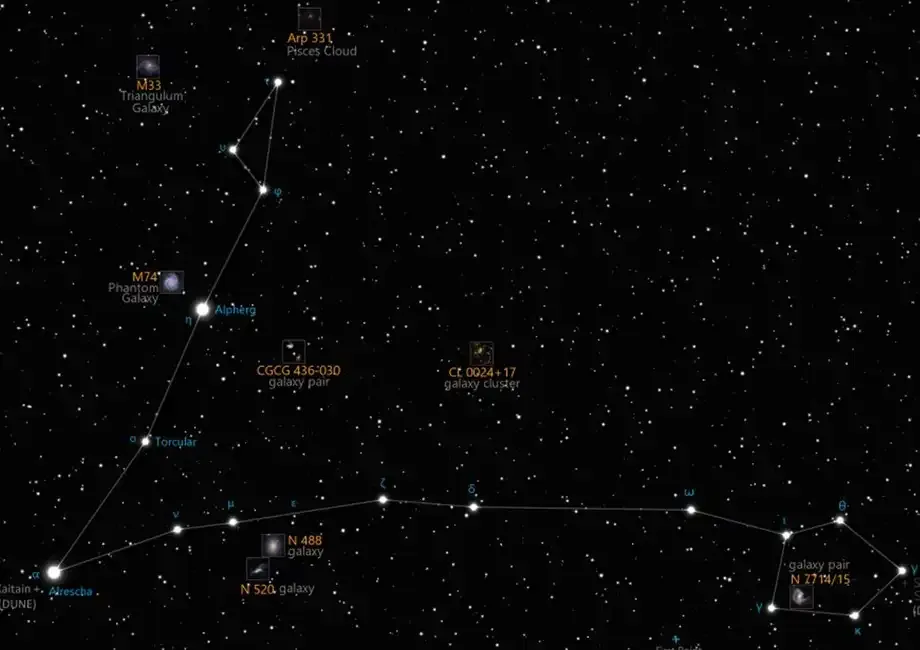
Pisces Austrinus, also known as the Southern Fish, is a constellation located in the southern celestial hemisphere. It is a small and faint constellation, but it holds historical significance and has been recognized since ancient times. Pisces Austrinus is best known for its brightest star, Fomalhaut, one of the most luminous stars in the sky.
Key Features
Pisces Austrinus is a relatively small constellation, covering an area of 245 square degrees. Its most prominent feature is Fomalhaut, which is often called the "Lonely Star" due to its isolation in a relatively empty part of the sky. This constellation is bordered by Aquarius to the north, Grus to the south, and Sculptor to the west.
Mythology
In Greek mythology, Pisces Austrinus is associated with the fish that swallowed the water poured by Aquarius, the Water Bearer. In another version of the myth, Pisces Austrinus is linked to the fish that carried the goddess Aphrodite and her son Eros to safety. The constellation represents a single fish, unlike the constellation Pisces, which depicts two fishes.
Notable Stars
- Fomalhaut (Alpha Piscis Austrini): The most notable star in Pisces Austrinus, Fomalhaut is a bright A-type main-sequence star located about 25 light-years away from Earth. It is one of the brightest stars in the sky and is part of the Winter Circle asterism. Fomalhaut is known for its debris disk, which may contain a planet.
- Beta Piscis Austrini: A fainter star in the constellation, Beta Piscis Austrini is a blue-white giant star located about 140 light-years from Earth.
- Gamma Piscis Austrini: Another star of interest, Gamma Piscis Austrini is an orange giant star about 222 light-years away.
Visibility
Pisces Austrinus is best visible in the evening during the late summer and early autumn months, particularly from August to October. It is visible from both the southern and northern hemispheres, but it is more prominent in the southern sky. For observers in the northern hemisphere, Pisces Austrinus appears low on the southern horizon, while those in the southern hemisphere can see it higher in the sky.
Tips for Observing
- Look for Fomalhaut: To locate Pisces Austrinus, start by finding its brightest star, Fomalhaut. This star is easily visible to the naked eye and serves as a good reference point for identifying the rest of the constellation.
- Use a Star Chart: Since Pisces Austrinus is a relatively faint constellation, using a star chart or a stargazing app can be helpful in identifying its stars and distinguishing it from surrounding constellations.
- Best Time to Observe: The best time to observe Pisces Austrinus is during its culmination in the evening sky, typically around midnight in late September or early October.
